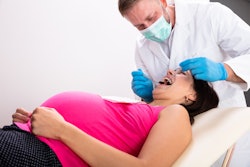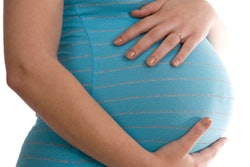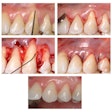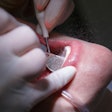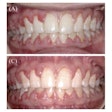Women with gestational diabetes mellitus (GDM) may have worse periodontal health, indicating a possible link between gum inflammation and this condition, which causes high blood sugar levels due to pregnancy-associated hormonal changes. The study was published in BMC Oral Health.
Additionally, pregnancy weight gain may be a strong predictor of GDM, highlighting the value of including oral health and weight management in prenatal care, the authors wrote.
“Pregnant women with GDM demonstrated significantly poorer periodontal health compared to healthy controls,” wrote the authors, led by Isa Temur of the Niğde Ömer Halisdemir University Department of Obstetrics and Gynecology in Turkey (BMC Oral Health, October 8, 2025, Vol. 25, 1563).
GDM, a frequently reported pregnancy complication, can cause systemic inflammation and may impact oral health. However, few studies have examined both systemic and oral health factors in women with GDM. The study’s goal was to explore the connection between maternal oral health, blood-based inflammatory markers, and GDM.
This case-control study was conducted at the university’s hospital from September 2022 to April 2023. It included 80 participants ages 18 to 35 who were systemically healthy, aside from those diagnosed with GDM. GDM was diagnosed using a 75-g oral glucose tolerance test performed between weeks 24 and 28 of pregnancy, they wrote.
Inflammatory and blood markers such as the neutrophil-to-lymphocyte ratio (NLR), neutrophil count (NC), white blood cell (WBC), plateletcrit (PCT), and platelet-to-lymphocyte ratio (PLR) were obtained from routine complete blood count tests. Dental assessments included caries evaluation using periodontal measurements taken at six sites per tooth.
The GDM group had a higher initial body mass index but gained less weight during pregnancy compared to controls (p < 0.05 and p < 0.01, respectively), and their eosinophil levels were significantly lower (p = 0.011). In the GDM group, NC and NLR decreased with worsening periodontal disease, with NC dropping from 8.01 ± 2.92 in healthy participants to 5.22 in severe cases, and NLR from 4.46 ± 1.81 to 2.88, they wrote.
WBC and NC were moderately and significantly negatively correlated with all periodontal indices, including clinical attachment level (CAL) (WBC: ρ = -0.57, p < 0.001; NC: ρ = -0.509, p = 0.001), while PCT and PLT were negatively correlated with CAL (p = 0.045). Periodontal health status showed that 82.5% of GDM participants were healthy compared to 90% of controls, though differences were not statistically significant.
The study, however, had limitations. The single-center design may limit the study’s generalizability, as results may vary across populations, the authors added.
“These findings suggest that integrating oral health assessments and weight management strategies into prenatal care programs may be beneficial in supporting maternal health and reducing the risk of GDM at the population level,” they concluded.





